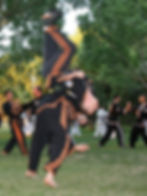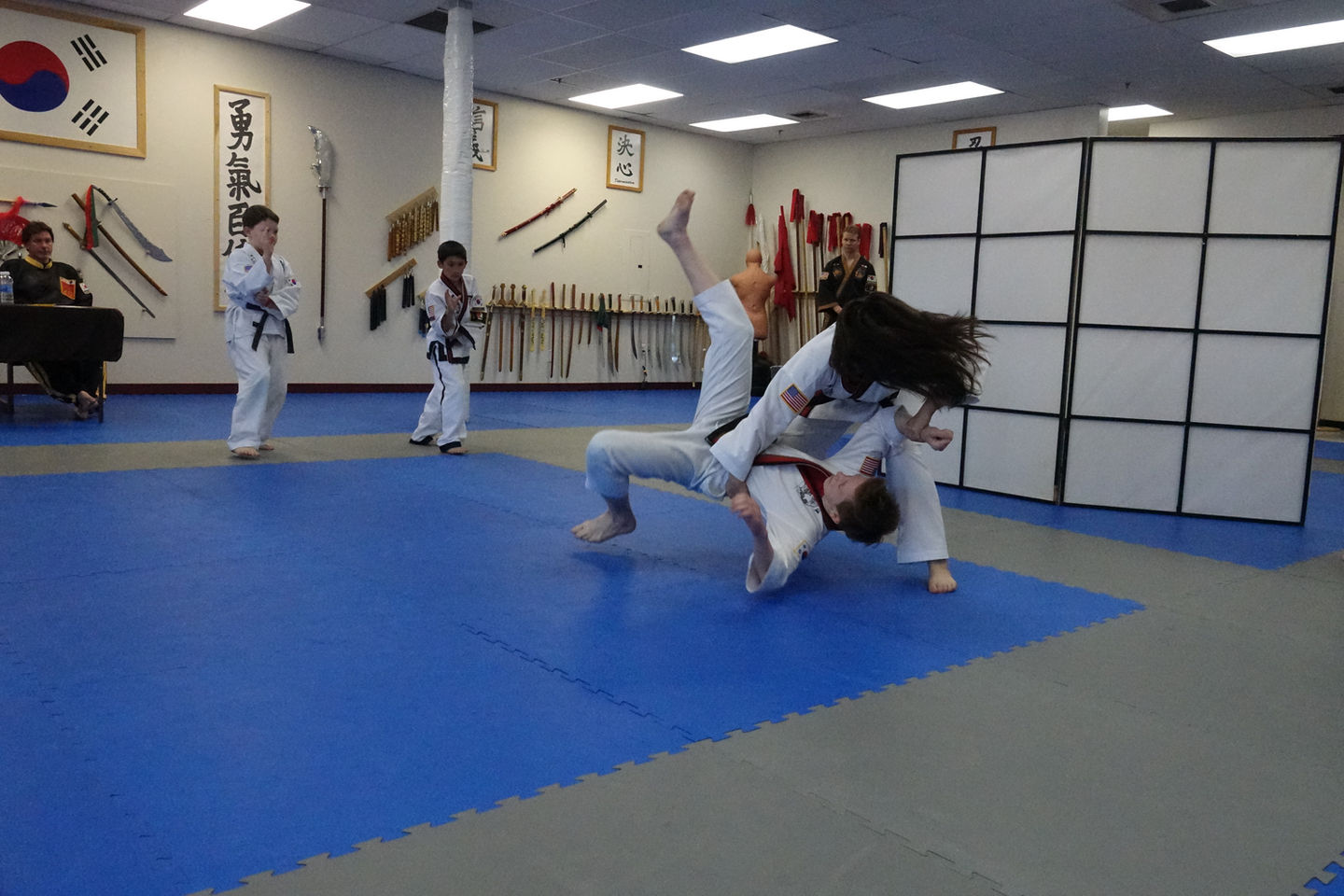Kirkland School
Northgate School

Judo /
Jiu-Jitsu
( Udo )
"I used to go to a gym, but that got boring. Then I tried out this place and haven't regretted it for a second. The instructors -- patient, thorough and providing personalized instruction -- make sure everyone improves.
It's a unique mix of martial arts, self defense and mindfulness that challenges the brain as much as the body.
Highly recommend their adult classes and the women's only self defense class."
- Carolyn H. ⭐️⭐️⭐️⭐️⭐️
About the Style
In Oom Yung Doe, students train in both the Japanese and Korean styles of Judo (called Udo in Korean) as well as traditional Japanese Jiu-Jitsu.
These styles are known for their powerful yet graceful throws, takedowns, and joint-control techniques - emphasizing movement, momentum, and precision over brute force.
Judo and Jiu-Jitsu both teach you how to stay on your feet, how to fall without injury, and how to use your opponent’s energy against them. At their core, these styles are about control, not just of your opponent, but of your own body.
Rather than meeting force with force, Judo and Jiu-Jitsu focus on redirection. Through precise footwork, balanced stances, and timing, even a smaller practitioner can take down a much larger attacker.

What It Develops
-
Real-World Self-Defense
These styles are extremely effective at close range. Against a grab, push, or strike, Judo and Jiu-Jitsu offer fast, efficient responses - using throws, sweeps, or joint locks.
Whether it’s a shoulder throw or redirecting a punch into a takedown, these techniques give you control over the situation without needing to rely on strength alone.
-
Falling Without Injury
One of the most important things you’ll learn is how to fall. Whether it’s slipping on a wet floor or getting knocked off balance, the ability to fall correctly and safely is a valuable skill at any age. Through repetition and gradual progression, you build reflexes that protect your head, spine, and joints.
-
Flexibility & Middle Body Strength
Judo and Jiu-Jitsu emphasize soft, rounded movement. Rolling, twisting, lifting - all of it builds deep strength in your core and spine. This kind of flexibility goes far beyond stretching. It promotes long-term joint health, better posture, and the ability to move freely as you age.
-
Body Control, Agility & Grip Strength
Throws, joint locks, and rolling demand full-body awareness. Your coordination improves, your reactions sharpen, and your hands grow stronger through grip work and positional control. You’ll gain the ability to move with confidence, not just in training, but in everyday life.

History & Lineage
The roots of Judo and Jiu-Jitsu go back centuries in Japan and Korea.
Udo (the Korean name for Judo) means “The Flexible Way,” and reflects the mindset of yielding to win - using flexibility, not resistance.
Judo, founded by Jigoro Kano in Japan, evolved from older forms of Jiu-Jitsu and was designed to preserve the effectiveness of traditional combat while making it safer to train and practice. Its techniques emphasize clean throws, sweeps, and leverage-based control.
Jiu-Jitsu is the older of the two, with techniques designed for battlefield combat - disabling or controlling an attacker at close range. While some branches evolved into ground-based systems, traditional Jiu-Jitsu still includes strikes, throws, and joint locks applied from a standing position.
Both styles share roots with Ai Ki Do and develop similar skills - control, precision, and fluid movement, while placing stronger emphasis on takedowns and close-range encounters.

OOM YUNG DOE
Oom Yung Doe schools located in Kirkland, Northgate and San Diego are managed
as part of the Oom Yung Doe USA 501(c)(3) nonprofit organization.
Donations made are tax deductible to the extent allowed by law.
Our Federal Tax ID under the name Oom Yung Doe Kirkland is 82-2858274.





















